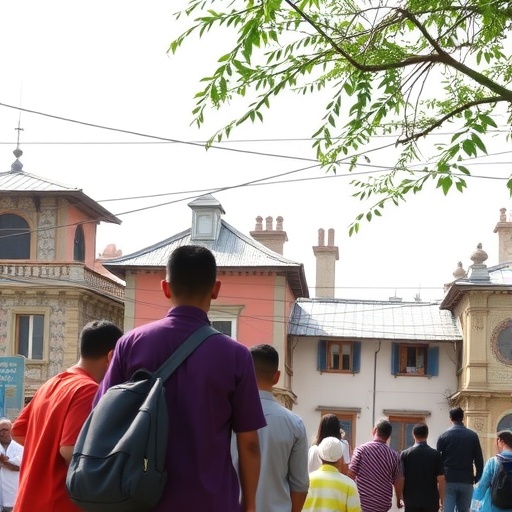In a world increasingly focused on sustainability and urban development, the dialogue around cultural heritage is accentuating its relevance in achieving the Sustainable Development Goals (SDGs) in cities across the Global South. This burgeoning discourse highlights the intricate relationship between culture, identity, and sustainable urban futures. As urbanization accelerates, cities in developing nations are confronted with unique challenges and opportunities, making the integration of cultural heritage into sustainable policies not just beneficial but imperative.
Cultural heritage encapsulates the history, arts, architecture, and traditions of communities, offering a foundation upon which present identities are constructed. However, in many cities, this heritage is under threat from rapid urban development and globalization, which often prioritize economic growth over cultural preservation. Understanding how cultural heritage can be harnessed in the service of sustainability is critical, as preserving identity can foster community engagement and social cohesion.
In the Global South, cultural heritage is not viewed merely as an artifact of the past but as a dynamic resource that can facilitate progress towards the SDGs. The historical significance of these heritages can be leveraged to promote local economies, particularly through tourism and the creative industries. When cities recognize the economic potential of their cultural assets, they can simultaneously work towards sustainability and ensure that heritage sites are protected for both present and future generations.
Moreover, cultural heritage can play a vital role in informing urban planning and development strategies. By integrating traditional knowledge and practices that have stood the test of time, urban planners can create environments that are more resilient to the impacts of climate change and other external pressures. This approach encourages the adoption of sustainable practices rooted in local context, rather than imposing one-size-fits-all solutions often derived from Western paradigms.
Educational initiatives also emerge as a critical component in the preservation of cultural heritage and the advancement of the SDGs. Schools and community organizations can serve as platforms for raising awareness about the importance of heritage conservation and its role in sustainable development. Empowering communities through education reinforces the narrative that cultural heritage is a vital contributor to social and economic well-being, facilitating a greater understanding of its value and urgency.
As cities in the Global South evolve, there is an increasing recognition that cultural heritage should not be relegated to the sidelines of urban policy discussions but rather should be a central element in shaping sustainable cities. This shift requires robust collaboration among stakeholders, including government officials, community leaders, and cultural organizations, ensuring that diverse voices are heard in the decision-making process.
Furthermore, the global pandemic has underscored the fragility of cultural institutions and the importance of digital engagement. Many heritage sites faced closures, yet this also accelerated the adoption of technology as a means of reaching audiences. Virtual tours, online exhibitions, and social media campaigns can help sustain cultural engagement and awareness, demonstrating that cultural heritage can be preserved and appreciated even in challenging times.
The economic dimension of cultural heritage cannot be overlooked, as it has the potential to drive local economic development. Investment in heritage tourism and creative industries can yield substantial returns, fostering job creation and stimulating local economies. As cities seek to recover from the setbacks caused by the pandemic, harnessing cultural heritage as an economic driver aligns well with the principles of sustainable development, generating financial resources for ongoing conservation efforts.
Moreover, cultural heritage promotes social inclusion, fostering a sense of belonging among diverse community groups. By creating spaces where different cultures can coexist and where historical narratives are shared, cities can cultivate more equitable environments. The integration of cultural heritage into urban development can contribute to social cohesion, reducing tensions between different community factions and promoting a collective identity.
International collaborations and partnerships also play a significant role in addressing the challenges faced by cultural heritage in the context of urban development. By sharing best practices and resources, cities around the globe can learn from one another, facilitating a more comprehensive approach to sustainability. Programs that engage both local communities and international experts can spark innovative solutions, enriching the cultural landscape while enhancing sustainability.
The integration of cultural heritage into urban development strategies helps cities navigate the complex interplay between modernity and tradition. This synthesis not only preserves unique historical narratives but also enriches the urban experience. A city’s character is often defined by its landmarks, traditions, and collective history, all of which contribute to the vibrancy of urban life, thus making cultural heritage a critical factor in urban planning.
In conclusion, as cities in the Global South confront the dual challenges of rapid urbanization and the pressing need for sustainability, the role of cultural heritage becomes increasingly salient. By leveraging this invaluable resource, cities can foster economic growth, social inclusion, and environmental stewardship, all while preserving the rich tapestries of their histories. This multifaceted approach not only aligns with the global SDGs but also exemplifies a model for other urban areas striving for sustainable futures.
Creating a synergy between cultural heritage and sustainability can serve as a blueprint for cities around the world. As the dialogue around this intersection continues to evolve, it will be essential for all stakeholders to engage deeply and collaboratively in redefining urban spaces, ensuring that they reflect not only modern ambitions but also the rich legacies of the past. Balancing these elements may well hold the key to achieving sustainable and culturally vibrant urban communities.
Subject of Research: The integration of cultural heritage into sustainable development goals in urban settings, with a focus on cities in the Global South.
Article Title: Cultural heritages and sites to achieve SDGs in cities: a perspective from Global South.
Article References:
Das, M., Rakshit, D. & Das, A. Cultural heritages and sites to achieve SDGs in cities: a perspective from Global South.
Discov Cities 2, 104 (2025). https://doi.org/10.1007/s44327-025-00150-7
Image Credits: AI Generated
DOI: https://doi.org/10.1007/s44327-025-00150-7
Keywords: sustainable development, cultural heritage, Global South, urban planning, community engagement




